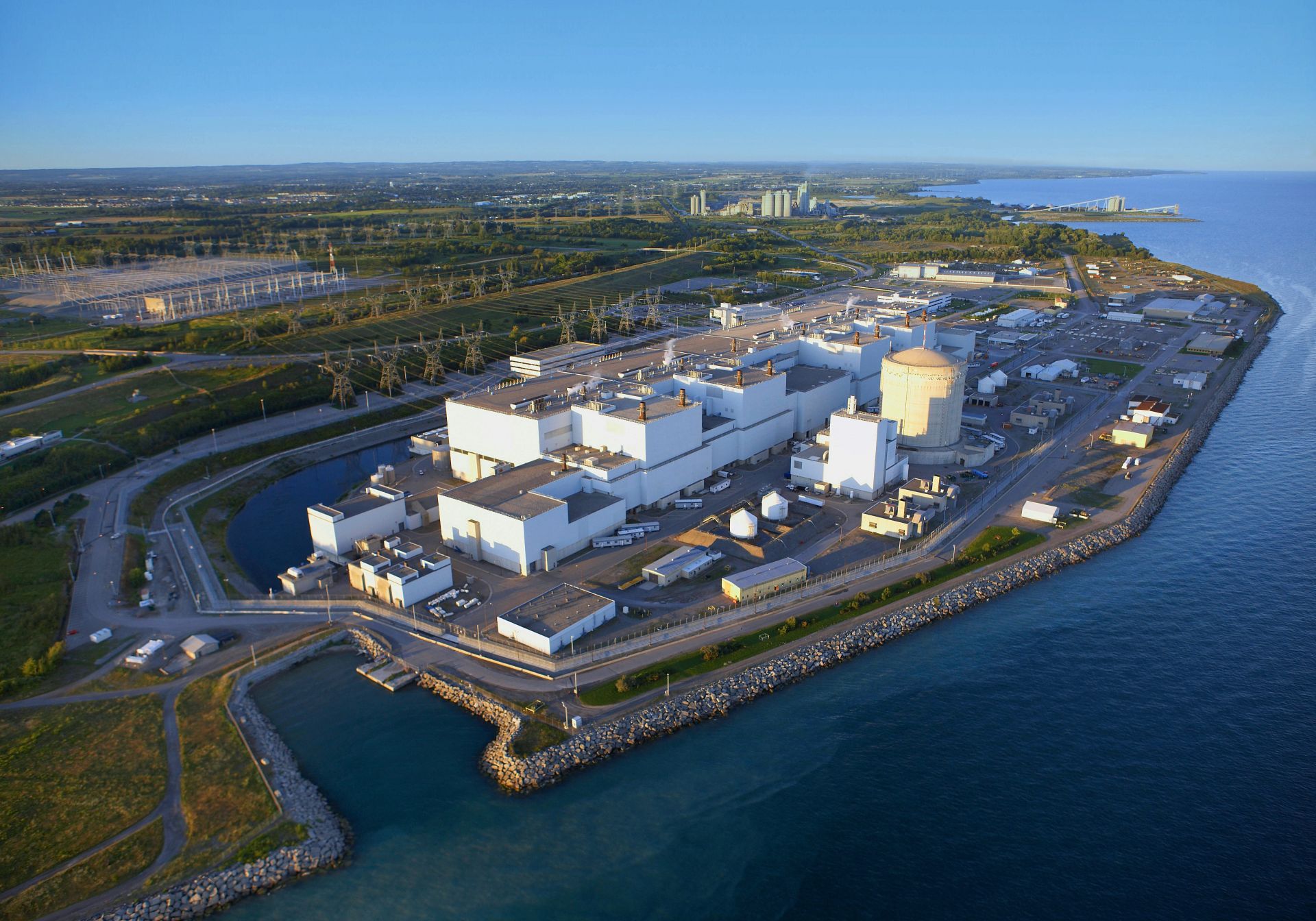OPG resumes planning for new nuclear at Darlington

Darlington nuclear power plant. Photo: OPG
Ontario Power Generation (OPG) recently announced the resumption of planning activities for future nuclear power generation at its Darlington site, with a goal of hosting a grid-size small modular reactor as soon as 2028. Originally, plans for the Darlington new nuclear project were focused on the construction of traditional large reactors.
Located in Clarington, Ontario, Darlington is the only site in Canada currently licensed for new nuclear. OPG was granted a license from the Canadian Nuclear Safety Commission (CNSC) in 2012 to allow site preparation activities for the project. The company has applied to renew the license, which is set to expire in August 2022. The CNSC will hold a public hearing on June 9–10, 2021, to consider the license renewal.
Early last month, OPG announced that it was working with three grid-scale SMR technology developers—GE Hitachi, Terrestrial Energy, and X-energy—to advance engineering and design work, with the goal of identifying options for future deployment.



